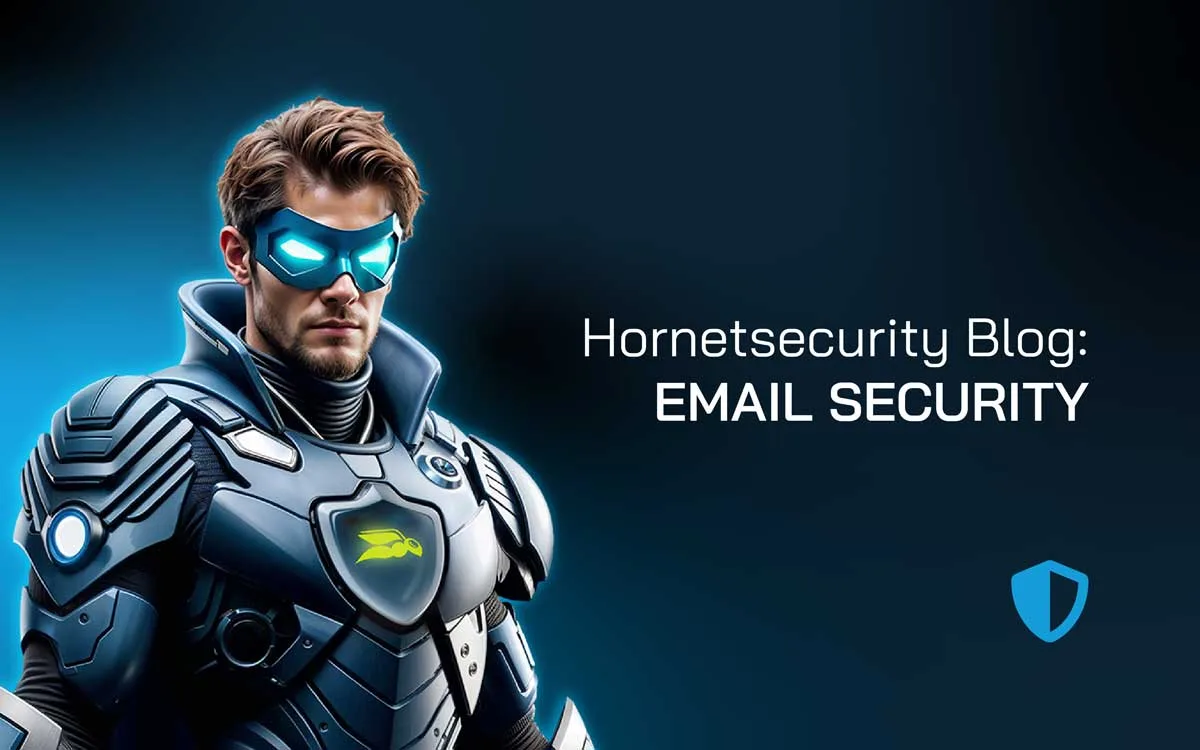

Understanding Email Security Technologies and the Power of Hornetsecurity’s Hybrid Approach
Email delivered threats such as phishing, malware attachments and Business Email Compromise (BEC) are still the number one favorite attack vector for cyber criminals. And they’re not letting up, with new flavors of attacks being tested every day. It just takes one legitimate looking email to sneak through into a user’s mailbox, and an unsuspecting user to click a link or open an attachment to open a door into your business for the bad guys.
In this article we’ll explain and provide a comparative analysis of the two main approaches to email security. We’ll then look at a few fictitious companies that suit one approach over the other and finally demonstrate how a hybrid approach, such as the one deployed by Hornetsecurity 365 Total Protection, offers the best of both worlds.
What are the Most Common Approaches to Email Security?
Email security isn’t a new problem. Even a decade ago when most businesses were still running their own email servers, they either had to install software on their edge servers to filter out the dross or subscribe to a hosted service to filter the incoming email feed before it reached said servers.
Today most organizations rely on hosted email, with Microsoft 365 and Google Workspaces being the most popular options. This provides the foundation for the two different approaches: Secure Email Gateway is the single point cloud service where all the incoming emails to your organization are filtered, and clean emails are delivered to your mailboxes.
The other approach is using Application Programming Interfaces (APIs) in the email cloud service to detect and respond to email threats, often called Integrated Cloud Email Security (a term coined by Gartner in 2021). This isn’t an either / or proposition either, you can combine both techniques, something called Hybrid Cloud Email Security.
Secure Email Gateway
This is the older of these two methods, having its roots in the appliances or hosted services that businesses used a decade or two ago. They filter incoming and (often) outgoing emails, removing spam, malware, and other threats, sometimes also providing data loss prevention by identifying sensitive data in outgoing emails. They can also encrypt outgoing emails with standard TLS (formerly SSL) encryption, as well as other approaches such as DNS-based Authentication of Named Entities (DANE), Mail Transfer Agent-Strict Transport Security (MTA-STS) and venerable encryption protocols such as S/MIME and PGP.

An in-depth exploration of DANE and MTA-STS are beyond the scope of this article but suffice to say that they make sure that traffic between mail servers on the internet are always protected with TLS encryption, and not susceptible to attackers changing IP addresses in the DNS infrastructure.
Not all Secure Email Gateway servers are created equally, and their defense mechanisms vary. Often, they apply advanced threat protection features such as opening attachments in sandbox environments to identify signs of malicious activity or use Machine Learning (ML) to identify potentially misleading or dangerous language in the text of a phishing email.
Once an email has been deemed safe and delivered to user’s inboxes, these gateways have no way to remediate threats if it’s later discovered that the message was malicious.
A big benefit of Secure Email Gateways is that all external email pass through them (if used for outgoing filtering as well), enabling easy archiving and journaling opportunities, to fulfil compliance regulatory requirements, as well as enabling e-discovery. These gateways also employ current technologies for identifying spam, phishing and spoofing and protecting organizations email reputation such as Sender Policy Framework (SPF), DomainKeys Identified Mail (DKIM) and Domain-based Message Authentication, Reporting and Conformance (DMARC).
They can also apply corporate template signatures to all outgoing emails, and because they’re a separate service they can provide continuity if Exchange Online or Google Workspaces is having an outage, providing webmail access, and queuing of emails until service is resumed. Depending on the service, there may limited integration with other security tools and services – if for example a user’s workstation becomes infected with malware, it’d be nice to easily know if they received any suspicious emails in the last few hours.
Finally, as a central service, they can provide excellent reporting and statistics on traffic volumes, threats detected, and actions taken.
They require some setup, and they’re not easy to “try out” in a proof of concept, because you must redirect your organization’s email domains (company.com) to the Secure Email Gateway service by changing the Mail eXchanger (MX) DNS entry. This will tell every email server on the planet where to send any emails for your domain, so you can’t do a test setup with just a few users for example.
Integrated Cloud Email Security via an API
The rise of large scale, cloud hosted email services such as Microsoft 365 and Google Workspaces have also spawned new integration points that weren’t available in the old on-premises world. The lifeblood of cloud services are APIs and the ease with which they facilitate integration between different services, and email is no exception.
These cloud services can easily integrate AI and ML for threat detection into user’s mailboxes (temporarily blocking access to delivered emails until scanning is complete), and unlike a gateway, they have continuous access to the entire platform, so that if an email is later identified as malicious, they can reach into mailboxes and delete or quarantine them “after the fact”.
Their ability to provide archiving is controlled by the APIs that the cloud provider offers, in fact, all their flexibility is entirely dependent on what the provider chooses to expose. They generally offer email authentication standards configuration (SPF, DKIM, DMARC) but this again depends on the underlying APIs.
Because they’re dependent on the cloud platform, they can only offer limited support for continuity in the case of an outage, and they don’t manage email encryption with PGP or S/MIME. Integrated Cloud Email Security services also don’t manage routing of emails, instead relying on the cloud platform for handling this. Reporting is likewise dependent on the APIs offered, but integration with other security tools is often excellent (as long as those tools are also cloud services). Being integrated “into the mailbox itself” means they can provide excellent data loss prevention services. If you have a large tenant, your provider must take into account API throttling limits as you can’t overwhelm the capacity of the platform with too many simultaneous requests.
Their real strength shines when it comes to setup – because no infrastructure or MX records need to change, they often only take a few minutes to deploy, and they can be scoped to a set of test users easily.
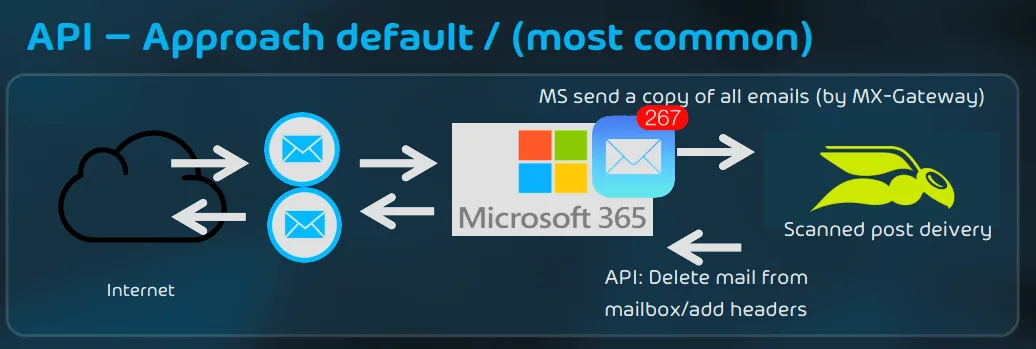
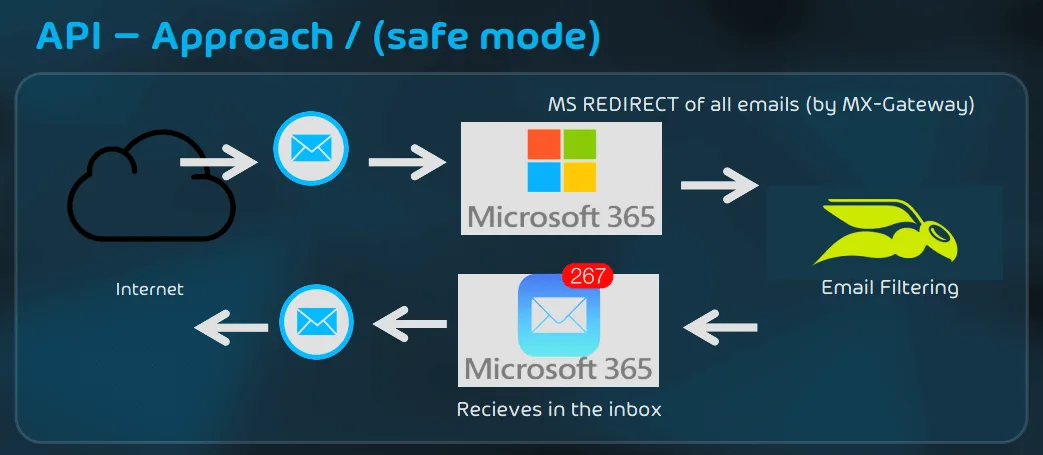
Hybrid Cloud Email Security – The best of both
In many scenarios, a combination of these technologies, like the hybrid model developed by Hornetsecurity, provides the best protection against email borne threats. The Secure Email Gateway will block most low-level threats, whereas the Integrated Cloud Email Security can deeply analyze the text of emails and attachments, using advanced AI and ML models to identify risks. Deployment is seamless, with easy integration into Microsoft 365 and Google Workspaces.
And the strength of each gives a better experience overall, if an email isn’t identified as malicious initially, but then received by other users later and this time blocked / quarantined (perhaps due to updated signatures), the gateway can tell the integrated service to delete the already delivered emails straight away.
During outages you get the benefits of continuing email access, reporting is even more comprehensive as not only incoming and outgoing emails are included, but also internal emails between employees which do not pass through the Secure Email Gateway. Data loss prevention is more comprehensive, with deep analysis of emails by the Integrated Cloud Email Security service, and the option to instruct the gateway to encrypt particularly sensitive emails based on the results.
Finally, because of the API driven nature of the Integrated Cloud Email Security they can extend beyond emails and mailboxes, such as managing permissions for attachments saved to OneDrive for Business from Outlook for example.
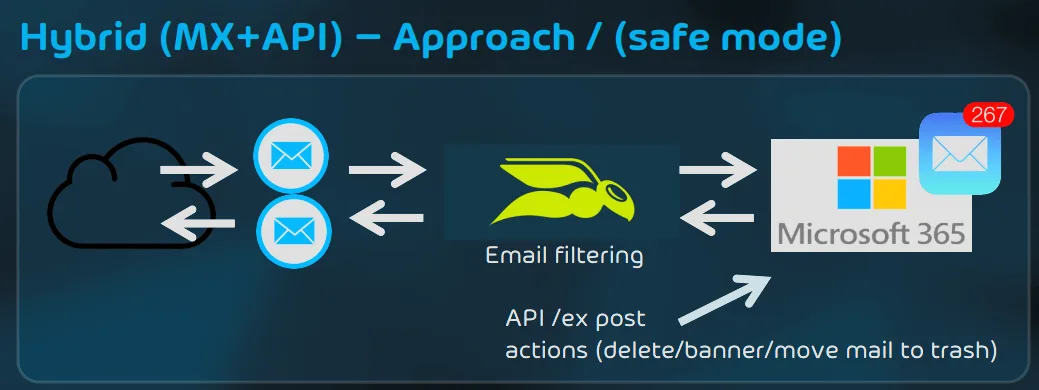
Hornetsecurity’s hybrid technology enables it to leverage gateway technology to provide solutions such as its Spam & Malware Protection, Signature & Disclaimers, Email Encryption, Archiving, and Continuity Service in addition to featured powered by integrated cloud technology such as Advanced Threat Protection, AI Recipient Validation, and 365 Extended Email Protection.
Use Cases
As always in IT, the right solution depends on the specific needs and existing environment of an organization. We’ll look at four different fictitious companies, and their situation and recommend an email hygiene solution to suit.
GlobalTech Inc. is a large multinational corporation that has diverse email services across different countries, including on-premises, Google Workspace and Microsoft 365. In this mixed, complex environment, a single, cloud based Secure Email Gateway service, integrating the different email domains will provide comprehensive control and reporting.
They’ll need to meet varying regulatory requirements in different regions, so enabling data loss prevention and email encryption through the gateway will be crucial. If there are email system outages, they’ll rely on the gateway’s continuance services to minimize business impact. Depending on IT needs, they may also add Integrated Cloud Email Security to their Microsoft 365 and / or Google Workspace tenants.
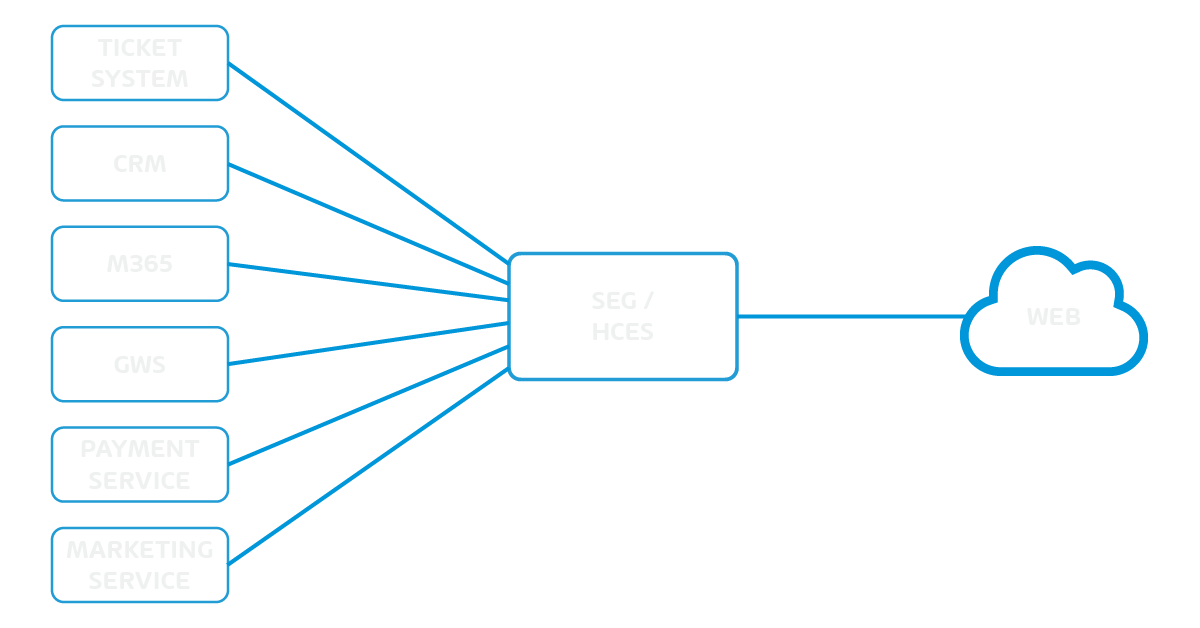
FinSecure Corp on the other hand relies on secure email communications with their clients. They’ve used S/MIME for many years to ensure end to end protection and non-repudiation of emails (proving that the sender of an email hasn’t been spoofed) and rely on DANE to mitigate the risk of criminals performing attacker-in-the-middle attacks against their email infrastructure. They will rely on a Secure Email Gateway service to enforce email encryption policies, and to demonstrate compliance with stringent regulations that are common for financial services firms.
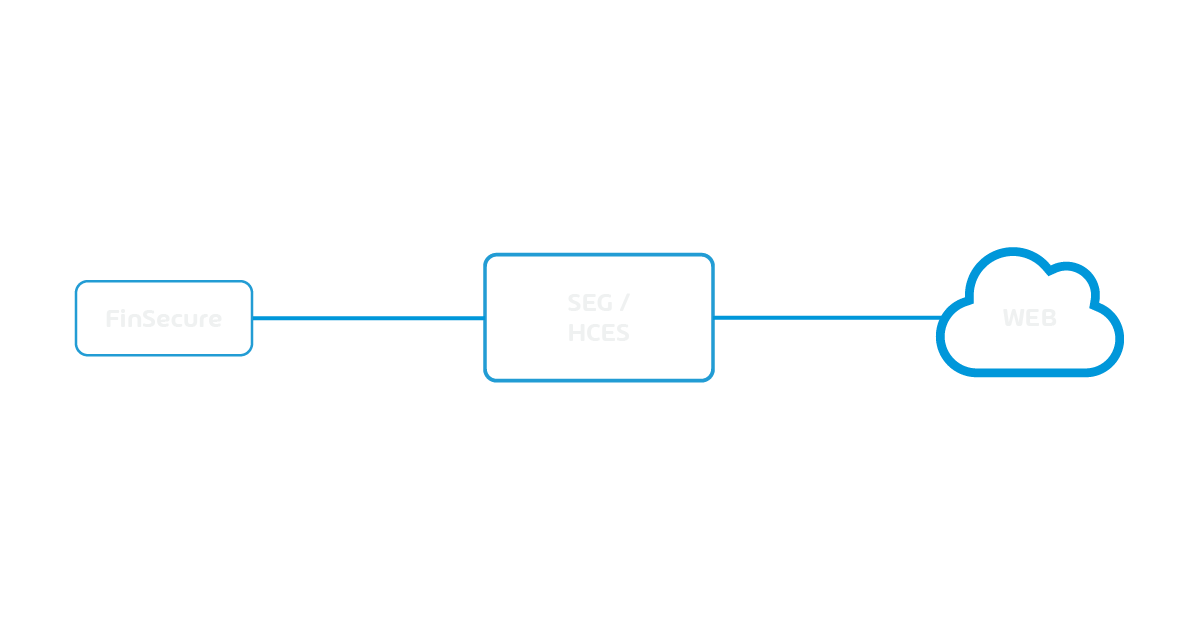
Our third example is CloudInnovate, a tech startup in Silicon Valley, relying exclusively on SaaS cloud services for collaboration and email. They’re growing rapidly and require an easy to integrate service for their cloud-first strategy. They’ll use an Integrated Cloud Email Security service for Microsoft 365 for easy scaling and providing advanced AI and ML protection against emerging threats.
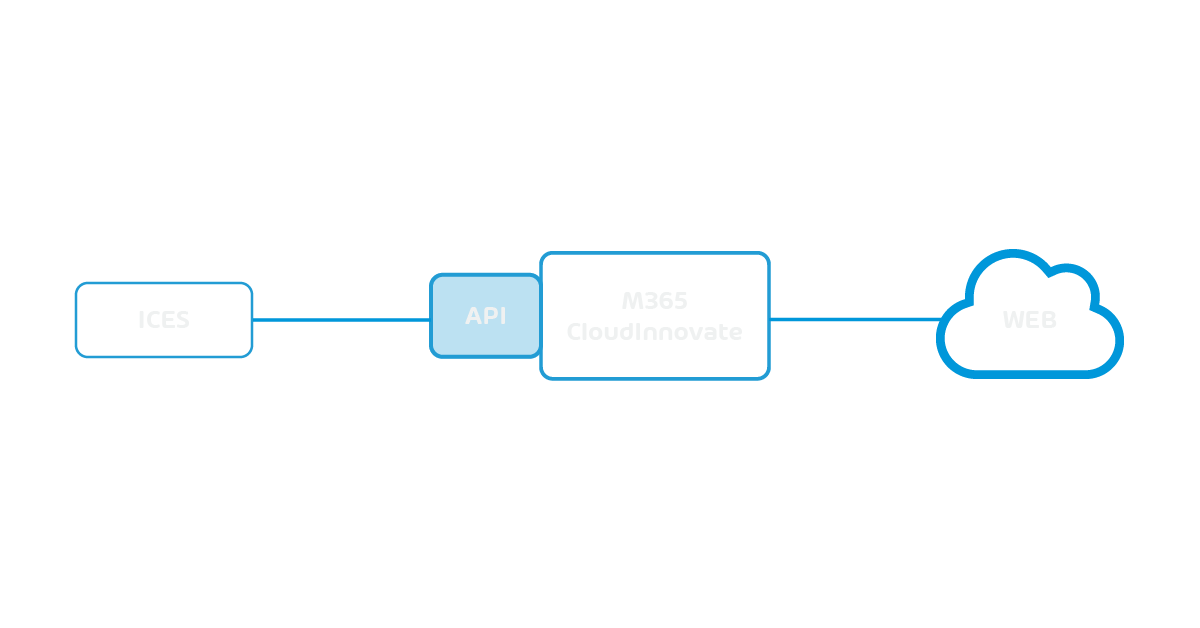
Finally, TechGen Robotics, a leading robotics research and development company, operates at the forefront of innovation in autonomous systems and AI technologies. They have a lot of sensitive intellectual property, and are financially successful, making them targets for BEC attacks as well as industrial espionage. They’ll use both technologies together to ensure encryption of all sensitive emails (and attached documents), along with deep data loss prevention inspection to protect their IP.
They’ll need the advanced protection in their Integrated Cloud Email Security to identify and stop sophisticated attacks, and use the encryption provided by the gateway to protect communications end-to-end. They need the email continuity provided by the gateway in case of a service provider outage, whilst relying on the advanced protection of the API solution to inspect emails and attachments, including when those are saved in cloud storage.
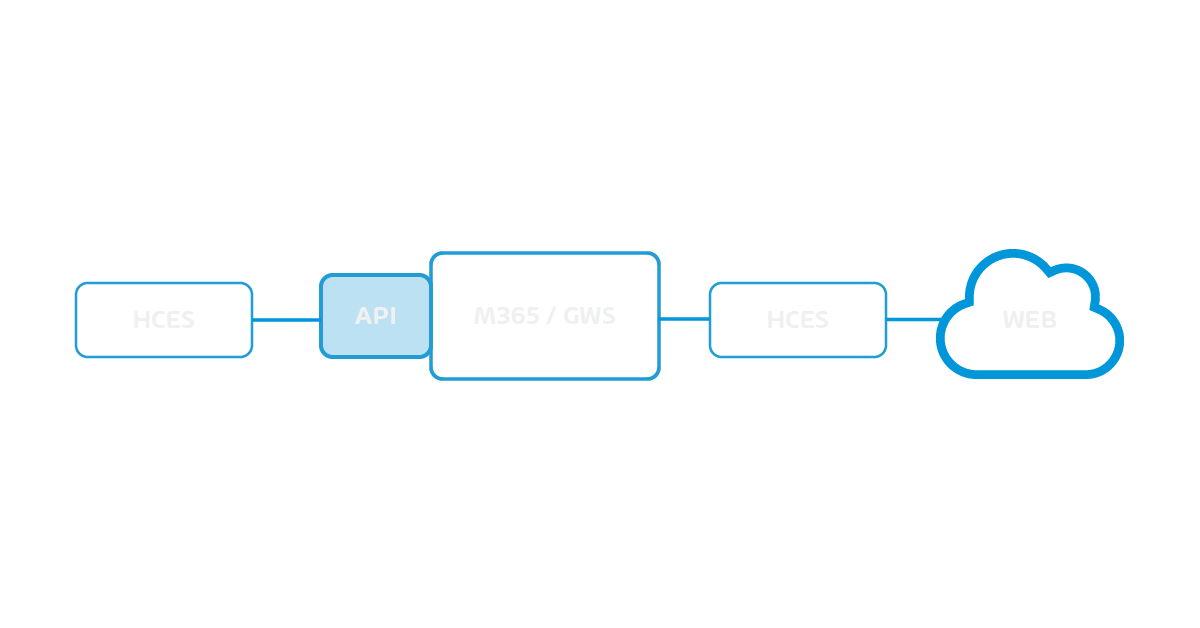
Conclusion
Hornetsecurity’s cutting edge email security solutions relies on providing both a Secure Email Gateway and Integrated Cloud Email Security for complete protection. As you have seen, both approaches have their strengths and weaknesses and by combining them, you truly get the best of both worlds, and the cleanest possible email feed.
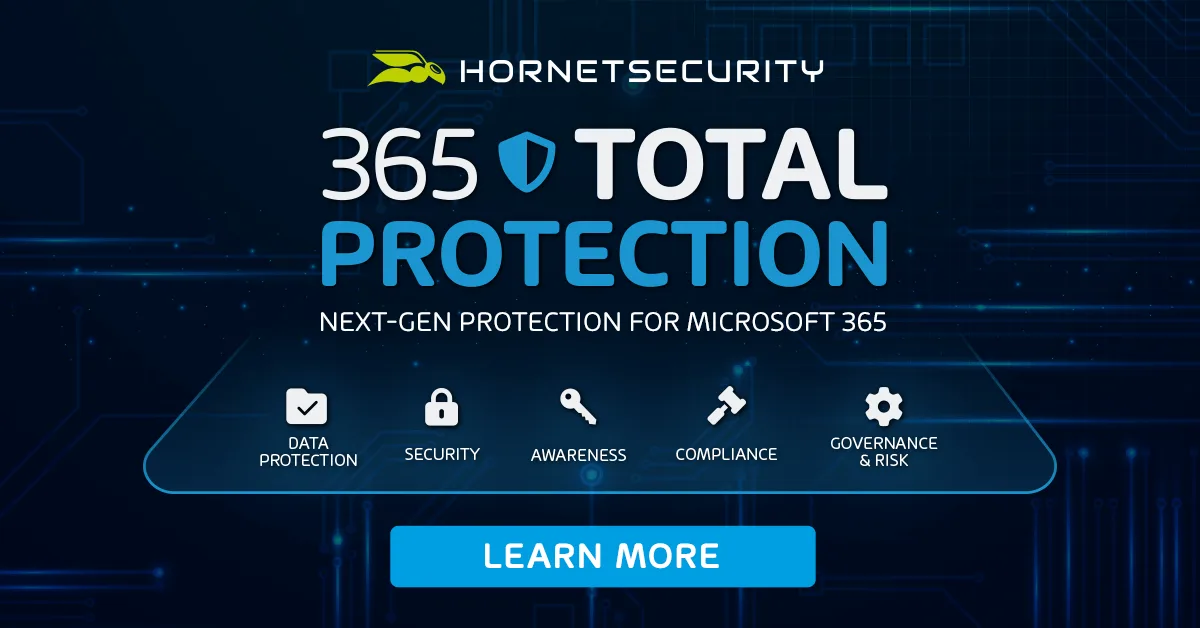
FAQ
Secure Email Gateway filters incoming/outgoing emails via a cloud service, while Integrated Cloud Email Security uses APIs in email platforms like Microsoft 365 to detect/respond to threats within the platform itself.
A hybrid approach to email security is necessary for certain businesses because relying on just one solution leaves gaps in protection. Secure Email Gateway (SEG) offers robust threat detection and compliance features but lacks continuous scanning and advanced threat protection capabilities. Conversely, Integrated Cloud Email Security (ICES) provides real-time scanning and post-delivery threat remediation but may not offer the same control and compliance as SEG. Additionally, businesses can reduce dependency on a single technology, mitigating the risk of vulnerabilities. A hybrid model also offers scalability and flexibility, allowing businesses to adapt their security measures as they grow and their needs evolve.
Hornetsecurity’s hybrid model enhances email security by blocking most threats with a Secure Email Gateway and using Integrated Cloud Email Security for advanced threat detection and response, providing seamless integration and robust protection.
